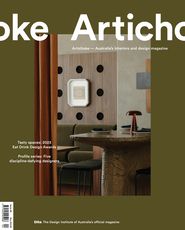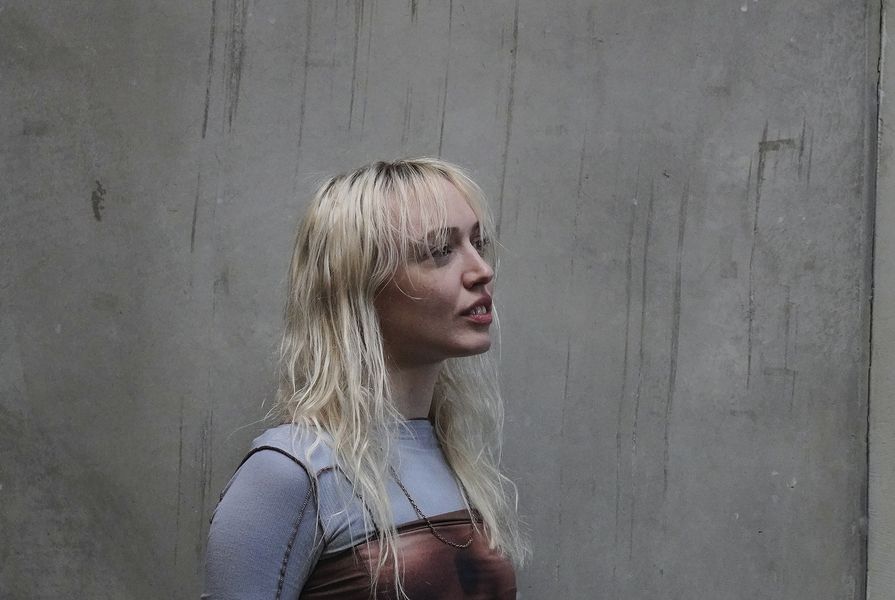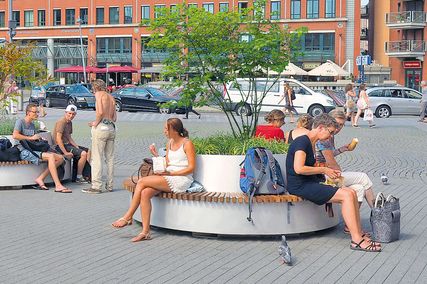Multidisciplinary designer Annie Paxton works in an architecture office by day, and she designs and makes her own furniture and lighting by night. While the two pursuits occur in separate spheres of her life, one creative practice draws from the other. “Residing in the liminal” is how the Melbourne-based designer characterizes her work, through which she investigates thresholds – material, spatial, physical – and tensions: between sculptural and functional, fragile and robust, process and outcome.
Paxton has always been a creative thinker who has enjoyed making things by hand. She studied architecture and began her master’s degree at the University of Western Australia before transferring to the University of Melbourne for her final year. She has since been a graduate of architecture at Kennedy Nolan, where she works on single-dwelling residential projects. Finishing her degree and beginning full-time work coincided with the 2020 lockdown, a period that Paxton says left her with “a lot of residual creative energy.” This inspired her to begin playing with ideas, forms and materials, an approach that has since transformed into a more structured creative practice.
Paxton’s first piece, Curio, began with strips of silk offcuts that she layered to create fabric-mâché light sculptures on a hand-formed clay base. “This extremely delicate material becomes something really robust,” Paxton says. She sculpted her second piece, the Lamina chair, with layers of recycled fabric and roving cloth. The material and form of the chair imbue it with both fragility and sturdiness, holding that liminal tension that interests Paxton.
Paxton’s 2021 Short Column lamp is tactile in chain mail.
Image: Elizabeth Kaye Campbell
Progressing into metalwork, she combined steel with frayed dupioni silk and chain mail to create the Column lamp series. Chain mail also envelops the Veiled table with a shimmering mesh sheath, animating an otherwise static object. “I’m interested in how design ultimately drives and is driven by the poetics of everyday life. An object or piece of furniture doesn’t have to just be this static thing in a room. It can direct you to feel or move in a certain way, or elicit memory and facilitate experiences,” says Paxton. She notes that reading Gaston Bachelard’s The Poetics of Space was a formative moment in her understanding of architecture beyond the physical pragmatics of form, function or symbolic association. This poetic sensibility continues to underpin Paxton’s approach to architecture and design.
The 2022 Vestige tables exemplify Paxton’s interest in process.
Image: Elizabeth Kaye Campbell
Guided by her formal architecture training, Paxton’s creative process begins with an idea – which is often driven by a specific material – and continues from sketching through to technical drawing to determine the precise methods of assembly. Always interested in liminal space, Paxton says, “There is this beautiful limbo between where the loose idea becomes something more permanent – where it gets tied down on the paper.”
The Vestige mirror won acclaim at the 2023 Vivid Emerging Designer Awards.
Image: Elizabeth Kaye Campbell
In contrast to architecture, where we only see the finished work, Paxton’s pieces directly speak about the design process. “I enjoy playing around with the idea of process as a material, rather than as a means of getting to the end result,” she says. This can be seen in the textures and patina of the sculptural Vestige mirror and tables, which are made from melted down and sandcasted recycled aluminium. The forms and surfaces reflect the time, process and energy of creating them, very much resonating with broader conversations around slow production and buying investment pieces. “The Vestige pieces seek to trace the story between product and process, and really celebrate the beauty in slow, thoughtful making,” says Paxton. “I hope people can see the process because that’s what I’m so fascinated by.”
The Long Column Triple lamp and Veiled table.
Image: Elizabeth Kaye Campbell
Her work has certainly been recognized by the design industry. In 2023, the Vestige mirror and Column lamp won their categories in the Vivid Emerging Designer Awards, and Paxton’s pieces were shown as part of the Discovery exhibit at the 2023 Melbourne Design Fair. In 2022, Paxton and her partner (Torren Clifford, a furniture maker and metal fabricator who operates Old Four Legs) held an exhibition titled Vestige as part of Melbourne Design Week.
As a multidisciplinary designer, Paxton will continue to hone her architecture and design practices through different facets of her life. Yet, they are conceptually linked as she explores her interest in process, thresholds and tension, creating furniture and lighting that resides in the liminal space in between.
Source

People
Published online: 19 Dec 2023
Words:
Rebecca Gross
Images:
Annie Paxton,
Elizabeth Kaye Campbell
Issue
Artichoke, December 2023































